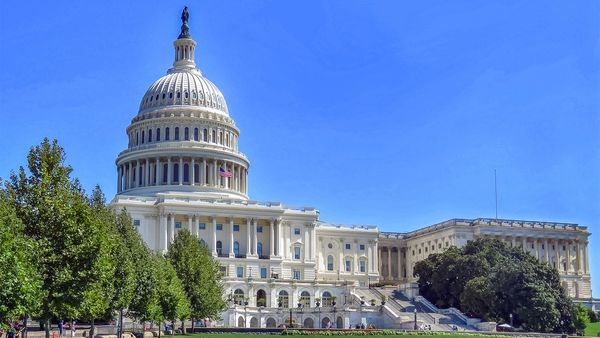
The CFMEU’s relationship with the Victorian government is another example of state capture, one to which state Labor governments are especially susceptible.
While the CFMEU’s role as the top donor to Labor in Victoria and elsewhere fits the pattern of other examples of state capture — the access purchased by political donations is a standard tool used by industries like fossil fuels or gambling, or the big four consulting firms — the union is an example of a much rarer form.
As an influential organisation within the governing party itself, the CFMEU wielded power greater than that available to mere donors to Victorian Labor. Like C|T Group, which operates as an internal strategy and campaigning brains trust for the Liberals while offering access to policymakers for its clients, or Labor-linked lobbyists Evan Moorhead and Cameron Milner working on Queensland Labor’s election campaign and then as lobbyists for their clients, the CFMEU in Victoria was integrated into the structure of the Andrews-Allan government.
But the CFMEU’s “client” was itself: its goal in Victoria was to displace the Australian Workers’ Union (AWU) as the dominant union in civil construction, which it achieved by leveraging its key roles within the Andrews government as a donor and factional powerbroker. By last year, Victoria government departments were openly telling construction companies they should deal with the CFMEU, not the AWU, if they wanted access to Commonwealth Games construction contracts. Not just the Victorian government but the Victorian public service itself had been coopted in the task of delivering for the CFMEU: access to infrastructure funding in Victoria was via John Setka.
Secondarily, this created a niche market for CFMEU officials, who allegedly sought kickbacks from companies that wanted a crucial enterprise bargaining agreement (EBA) with the union. Without a CFMEU EBA, it was “no ticket, no start” for major Victorian projects.
The Labor Party is more susceptible to this form of capture than the Liberals, because trade unions are the building blocks on which the ALP is built, and unions continue to wield enormous financial and factional power within the party, especially at the state branch level.
But while unions representing public sector workers such as teachers and nurses might lament that they don’t have a hope of capturing Labor governments sufficiently to win substantial pay rises, construction is different. The construction industry is riddled with crooks — dodgy property developers, shonky builders, bribed officials, rotten local governments. The CFMEU is just one shark among many in an industry notorious for its corruption. Large government infrastructure programs like Victoria’s “Big Build” are like throwing meat in among them.
And while the headlines about organised crime and bikie infiltration of the union are more interesting, they’re less important than how the CFMEU captured a state government. That capture, and the bending of Victorian government policy to the will of John Setka and co, is a major problem without any bikies or criminal involvement. It illustrates that a union, one not merely a donor but also one that exercises serious factional power and which is dependent on government policy, is incentivised to use its internal party power to reward itself.
It also confirms a standard Liberal criticism of Labor: that Labor, at least at the state level, is controlled by unions focused on their narrow self-interest and not the public interest. The efforts of Victorian Premier Jacinta Allan — left to clear up Dan Andrews’ mess — to distance herself from the CFMEU look hollow while the union still wields internal power within Victorian Labor.
At the federal level, the Albanese government is moving fast to make it look like it is taking real action against the CFMEU. Helpfully, the prime minister has long been on record criticising Setka after having him kicked out of the ALP in 2019. But having gotten rid of the Australian Building and Construction Commission, federal Labor is vulnerable to the charge of looking after the CFMEU as well. And it has a big infrastructure program as well.
Has Victorian Labor falled under the state capture of the CFMEU? Let us know your thoughts by writing to letters@crikey.com.au. Please include your full name to be considered for publication. We reserve the right to edit for length and clarity.







